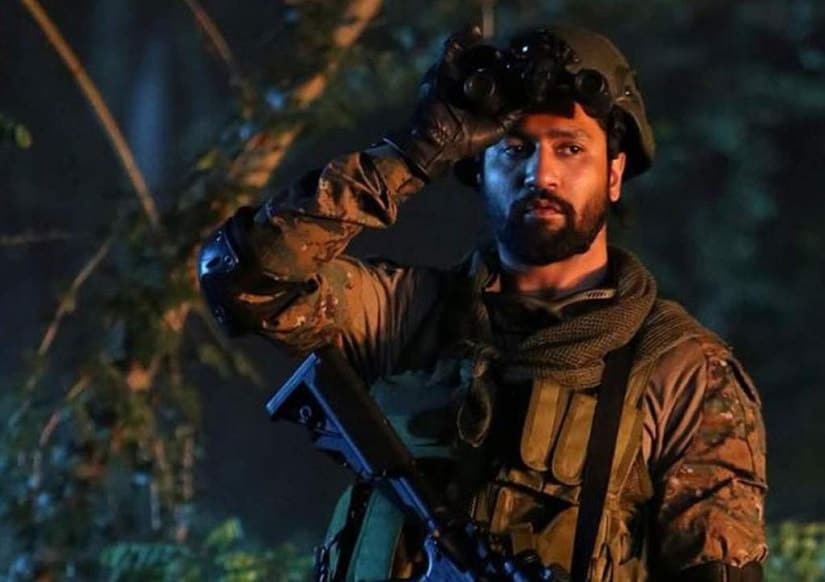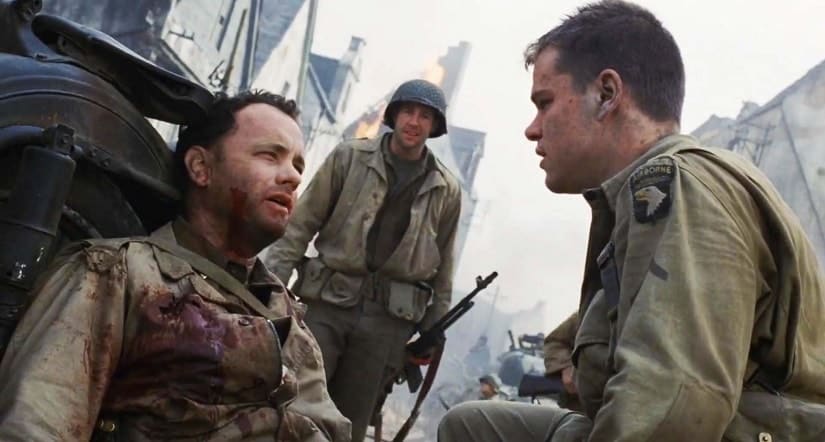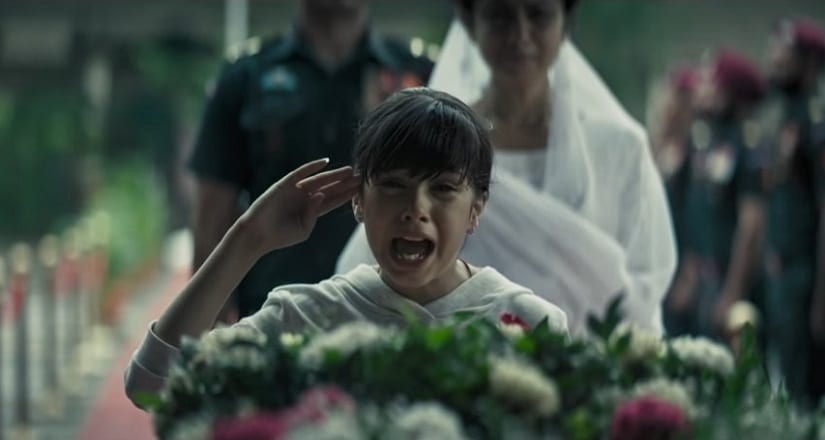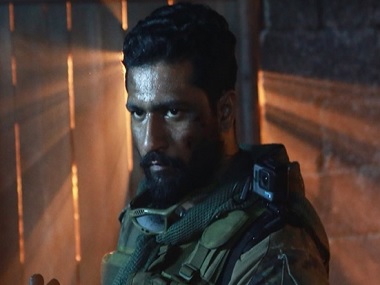Bollywood doesn’t do war movies well. So starved are we for cinema that recreates important chapters of our military history, that even jokes about re-watching Border on Independence Day and Republic Day have grown stale. Its cheesy, pop-culture-defining jingoism apart, JP Dutta’s pièce de résistance had magnitude and heart, but little else. It was shoddily edited, thoroughly over-written and filled with hammy performances. And apart from Border, does any other Indian war film even instantly come to mind? In that regard, Bollywood seems to finally be getting there, with Aditya Dhar’s _Uri: The Surgical Strike_ . [caption id=“attachment_6028781” align=“alignnone” width=“825”]  Vicky Kaushal in Uri: The Surgical Strike. Image via Twitter/@Sohanbir5[/caption] Make no mistake: Uri is mostly a smart product that capitalises on the prevailing mood of the nation, maximises its limited budget to tell a brisk, topical tale, and throws in some melodrama and female representation as an added bonus. Needless to say, India wins in the movie, ensuring that the film marches past 200 crores (with the likelihood of adding some more to the total by the time it is done with its theatrical run.) Yet, Uri rarely rises above being merely an emotionally-charged entertainer, preferring to comfortably swim with the current instead of turning the other way and grabbing at your gut in the manner that great war movies do. From Stanley Kubrick’s outrageous Full Metal Jacket, to Francis Ford Coppola’s Apocalypse Now, to even Steven Spielberg’s masterful Saving Private Ryan, amid all the violence, destruction, death and/or victory, the larger point the most memorable wartime movies make is that in the end, no one wins. The best war films aren’t anti-enemy; they are anti-war. They remind us of the futility of large-scale violence, of the human cost of upholding the state’s honour. They gently convey that nations don’t go to war, governments do, the armed forces merely pawns in the game. Of course, the very best of them also had the ability to transport you to the middle of the carnage. Saving Private Ryan, for instance, starts with a short, gentle prologue, before yanking you to Omaha Beach, Normandy for a sequence that lasts nearly half an hour; a gritty, tough-to-watch sampling of what war must really feel like. The visual craft seen in this extended sequence is unlike anything else you’ve seen from Spielberg, with a style that seemed to have been fundamentally inspired by the cold brutality of war. [caption id=“attachment_6028831” align=“alignnone” width=“825”]  A still from Saving Private Ryan. Image via Twitter/@classicsman70[/caption] Ridley Scott’s Black Hawk Down is even harder to watch. You’re in the midst of American intrusion in an African civil war for two and a half hours, as it jumps from character to character, situation to situation, every single one of them entrenched in battle. Set in 1993, during the civil war in Somalia, it had American soldiers dying in the film almost throughout, the film pausing for drama only when the chain of command insisted that no man would be left behind, dead or alive. _Uri’_s shortcomings when compared to seminal cinematic works about war do hinge a lot on its budget constraints, though it also has so much to do with just how its narrative has been designed. The broad details about India’s covert retaliatory strikes in Pakistan-occupied Kashmir are in the public domain, but in Uri, the film, what we get in the build up to the eponymous military operation is high-octane melodrama. So, you have a brother-in-law killed in action during Pakistan’s shameful attack on the army base in Uri, a pregnant sister widowed by it, a parent suffering from Alzheimer’s, the works. Then, when Vicky Kaushal’s Major Vihaan Shergill makes a promise to his superior officer that he would bring back every single one of his men back from the operation unharmed, it sounds like a Hindi film hero speaking, not a soldier; because in the real world, before a complex military operation, can anyone ever make such a promise? In that sense, it borrows from the Michael Bay playbook in Pearl Harbour. The schmaltzy love triangle sprinkled with bromance as a backstory in that World War II film was an attempt to raise the stakes and add drama to the battle sequences. It’s almost an admission that your war portions are just not going to stand apart on their own. Pearl Harbour had the advantage of budget and scale; Uri doesn’t have that. Perhaps that’s why the portions depicting the planning of the surgical strike are lazily glossed over with song. The tactical aspect of war is almost completely done away with, replaced by Paresh Rawal, who douses his Doval-esque National Security Advisor character with unintentional smarm. You’d think that a cinematic representation of the surgical strike would make for a nail-biting watch, but what you get instead is just the *idea* of vengeance and victory, not an outstanding climactic battle. In that sense, the climactic battle sequence in Farhan Akhtar’s Lakshya seems far smaller in scale to Uri, but it still works better because we were given a clear sense of the tactics, strategy, geographical spread and overall stakes in the former. Even Amrit Sagar’s 1971, the thoroughly underrated 2007 film set a few years after the India-Pakistan war in ‘71 over the liberation of Bangladesh, genuinely packed multiple layers about the horrors of military action. [caption id=“attachment_6028871” align=“alignnone” width=“825”]  A still from Uri. Image via Twitter/@vaibhsanand[/caption] Uri may be one of Bollywood’s better war dramas to date, but it can still hardly be even compared to such works as Apocalypse Now, or even Christopher Nolan’s Dunkirk, which remains a film unparalleled in visual and narrative technique, no matter how far back we look in the annals of film history. With craft that great, sometimes a weak or uninspiring script can still be turned into a masterwork. Uri’s true victory lies in the fact that it has found its way into pop culture parlance rather effortlessly. Aided by India’s top politicians parroting Uri’s most memorable line in public gatherings, Vicky Kaushal’s ‘how’s the josh’ is the cinematic equivalent of Virat Kohli pumping the men in blue with his irrepressible energy while leading them on the field. (Mood of the nation, indeed.) The line appears thrice in the film, at three key points in the plot. And those are the only times the film manages to show a semblance of depth beyond the obvious. The context of each of those three scenes is different, so the emotion that is played up is also different. Yet, they are united by the energy and intent behind the calling cry. The three ‘how’s the josh’ moments are easily the highlight of Uri. A pity, then, that the same nuance wasn’t applied to the film in its entirety. A great military film should leave you shook; Uri: The Surgical Strike might have to just settle for shaking up the TV schedule on Independence Day.
The true victory of Uri: The Surgical Strike lies in the fact that it has found its way into pop culture parlance rather effortlessly
Advertisement
End of Article


)
)
)
)
)
)
)
)
)



